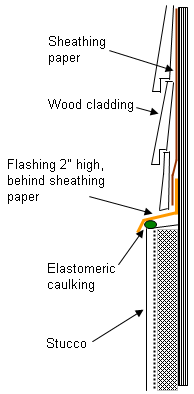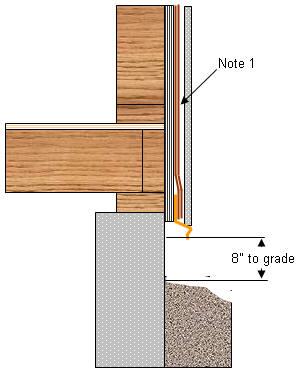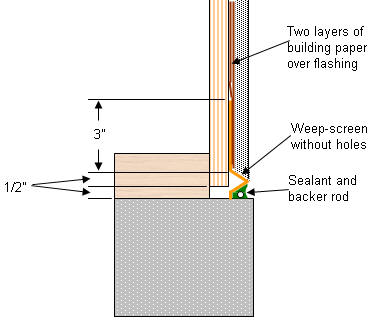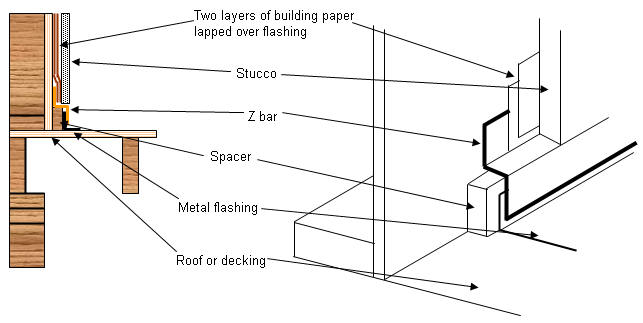Problem: Moisture damage inside the stucco wall assembly.
Cause: Entry of rainwater and snow at the junction of different cladding materials.
Missing or poorly installed flashing at the junction of different elements of the cladding system can often result in water penetrating behind the stucco, causing damage to the wall assembly.
Solutions:
Install building paper and flashings correctly to ensure positive drainage.
- Sheathing paper must overlap any installed flashing. The flashing should extend up the wall a minimum of 2 inches (50 mm) beneath the building paper. Flashings should overlap the sheathing paper below. Do not seal the space above flashing, as it is designed to shed any water running behind the stucco as shown in Figure 52.

Figure 52 - Wall Flashing - Stucco Mates With Wood Cladding
- An elastomeric caulking should be used to seal the space between the stucco and underside of the flashing.
Provide adequate clearances and flashing and counter-flashing where stucco meets horizontal surfaces.
- Stucco should have clearance from grade of at least 8 inches (200 mm) unless applied directly over concrete or masonry.
- Apply flashings and counter-flashings where stucco intersects with a horizontal surface, such as a flat roof as shown in Figures 53a, 53b and 53c.

Figure 53a - Stucco Flashing Installation - Option 1
Note 1: Two layers of building paper lapped over the flashing.

Figure 53b - Stucco Flashing Installation - Option 2

